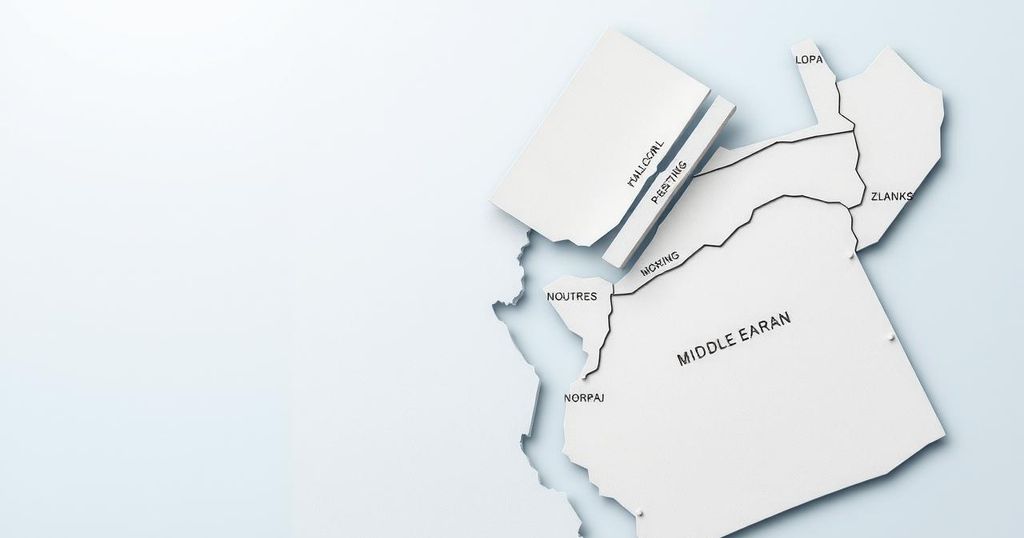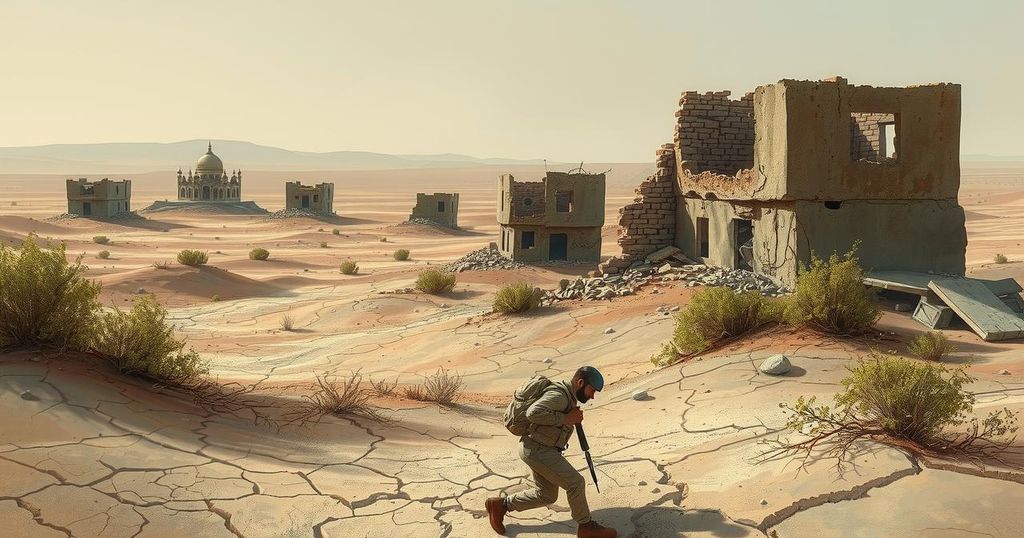Abu Mohammed al-Jolani, originally an Islamist militant, transformed from jihadist leader to a revolutionary figure in Syria. Backed by Al Qaeda, he founded HTS after distancing himself from extremism, presenting as a moderate leader focused on liberating Syria. His governance in Idlib has raised human rights concerns even as he seeks to redefine his group’s image amid changing regional dynamics.
Ahmed Al Sharaa, aka Abu Mohammed al-Jolani, initially emerged as an Islamist militant in 2011 with a mission to establish Al Qaeda’s affiliate in Syria, Jabhat Al Nusra. Backed by Abu Bakr al-Baghdadi, he moved from Iraq to Syria as an armed rebellion gained momentum against President Assad. Born in Riyadh to Syrian parents, Jolani’s radical transformation began following the Second Palestinian Intifada, leading him into jihadist activities in Iraq after the U.S. invasion in 2003.
Despite operating mainly in the shadows, his prominence escalated. Jolani’s public debut was a 2016 video in which he announced a split from Al Qaeda, forming a local focused group called Jabhat Fateh al-Sham, later renamed Hayat Tahrir Al Sham (HTS). He emphasized distancing himself from his violent jihadist past, as he sought to evade global powers’ responses to Islamist threats.
Jolani’s evolution is marked by a shift from jihadist garb to a Western-style blazer, indicative of his newfound image as a revolutionary. He has positioned HTS as a potential partner for regional powers curtailing Iranian influence and undertook operations against ISIS, notably killing their leader in 2023. His approach has redefined his public narrative, steering clear of anti-Western sentiments.
Recently, Jolani granted an interview to CNN, presenting himself more as a moderate leader focused on liberating Syria than as a jihadist. Leading 4 million people in Idlib, he has initiated campaigns against ISIS and rival factions. Nonetheless, human rights groups have raised concerns about HTS’ treatment of dissent, although Jolani denied any complicity in abuses.
Despite efforts to shed his extremist affiliations, the U.S. continues to classify HTS as a terrorist organization, complicating his rebranding efforts. The shifting dynamics in Syria present an opportunity for Jolani, who may be seeking favor from both regional and Western entities in the context of potential regime collapse.
Abu Mohammed al-Jolani’s transformation from radical jihadist to a revolutionary leader embodies the complexities of the Syrian conflict and the broader Middle Eastern landscape. Originally part of a terrorist framework under Al Qaeda, his strategic moves reflect the need for local leaders to adapt in a multifaceted conflict where global powers are heavily invested. His regional influence is accentuated by the ongoing turmoil within Syria.
Abu Mohammed al-Jolani’s journey illustrates a significant ideological shift from a radical militant to a more mainstream political figure amid Syria’s ongoing strife. His tactical separation from Al Qaeda and the adoption of a more acceptable narrative have positioned him favorably, yet persistent concerns about human rights abuses and U.S. designations as a terrorist organization complicate his efforts for legitimacy in a tumultuous regional context.
Original Source: www.cnn.com




